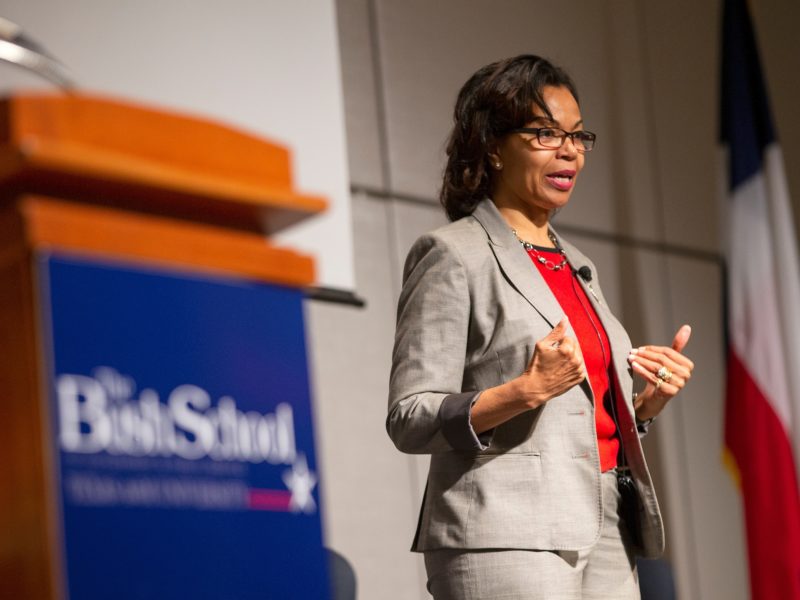Early Education Important For State’s Future
 As Texas lawmakers work to decide how to allocate funds for the next biennial state budget, a study conducted at Texas A&M University is being spotlighted by early education advocates.
As Texas lawmakers work to decide how to allocate funds for the next biennial state budget, a study conducted at Texas A&M University is being spotlighted by early education advocates.
The study, a capstone project, shows that investment in high-quality, early education makes good money sense, with its benefits far outweighing its costs.
In the study, “A Cost-Benefit Analysis of Universally Accessible Pre-Kindergarten Education in Texas,” graduate students at Texas A&M’s Bush School of Government and Public Service, under the supervision of Lori Taylor, an economist and associate professor in the Bush School, concluded that every $1 invested in a high-quality, pre-kindergarten (pre-k) program returns $3.50 per participant, based on the enrollment of 70 percent of all four-year-olds in the state.
“The key is ‘high quality,’ notes Taylor, who specializes in school finance issues. “This means it has a number of characteristics including high teacher-student ratios, teachers with college degrees who are certified in early childhood education, and curriculum rather than custodial care – learning colors, numbers, letters and reading preparation.”
Taylor characterizes a high-quality pre-k program as, “a way of leveling the playing field. It’s particularly valuable for kids whose parents are not educated or are unavailable for interaction.”
The Bush School research shows that children who attend a high-quality pre-k program “are less likely to repeat grades, more likely to excel on standardized tests and to complete school, more likely to attend college and earn a higher wage, more likely to pay taxes instead of relying on social services and less likely to go to jail,” explains Taylor.
And it’s not just the children who benefit from high-quality early education, says Taylor, emphasizing that the parents benefit, too.
“To reap the full benefits, you need a full-day pre-k program,” she contends. “In addition to benefitting the children, it also allows the parent to go back to work. That is undermined by a half-day program. Those years of work experience are good for the parent and the child. What people earn is a function of their years of experience, so if parents can return to work confident in their children’s environment, they’ll have more earning potential.”
In the study, Bush School researchers contend that high-quality pre-k is an important policy issue to Texas because economic changes make upgrading the skills of the state’s labor force essential.
“Over the last two decades, Texas’ economy has shifted from an emphasis on extractive industries, such as oil and agriculture, to an emphasis on knowledge and technology,” the report states. “Unfortunately, a large percentage of the Texas population is not highly skilled or educated. Furthermore, without efforts to reform the quality and educational attainment of the labor force in Texas, the situation will only get worse. The average American citizen became better educated during the 1990s, but Texans showed much less improvement than the residents of other states.”
Despite the research, and the fact that Texas public school enrollment has increased by 20.1 percent over the last decade, the legislature cut funding to public schools by $5.4 billion in 2011, according to the Texas Education Agency.
Taylor says in Texas, “people want to keep taxes low, and that has been a major guide in budget-making over the last five or 10 years.”
She says it’s too soon to tell what effects the 2011 education cuts will have on today’s students. “We have expectations which are that, absent pre-k, school districts are going to need to use other resources to level the playing field for low-income children.”
The 2006 Bush School study took existing literature on early education and applied it to Texas. The students used a 2005 report by the RAND Corporation titled “The Economics of Investing in Universal Preschool Education in California” as a model for their analysis.
Media Contact: Lesley Henton, Texas A&M News & Information Services.





